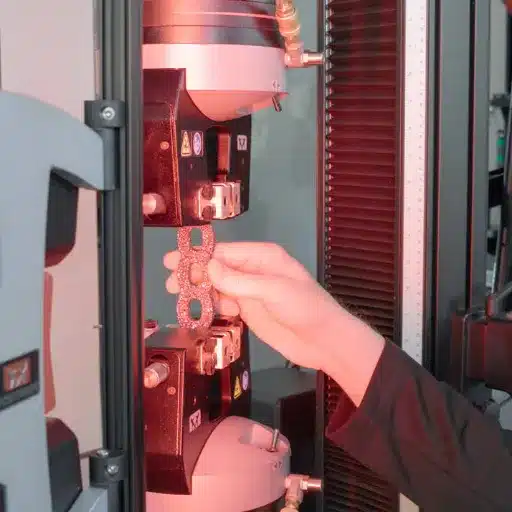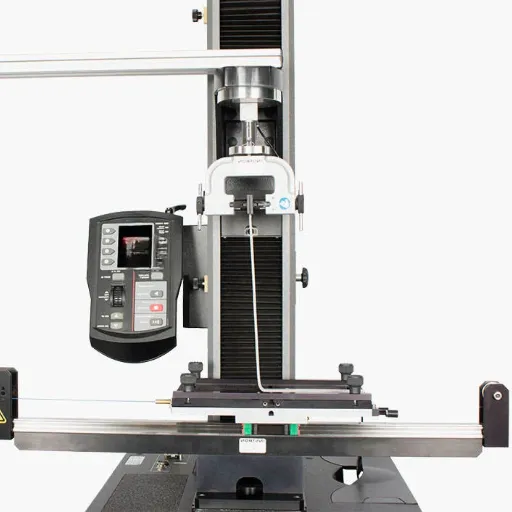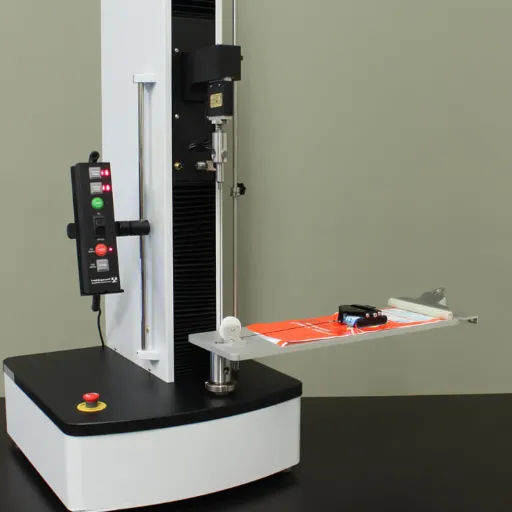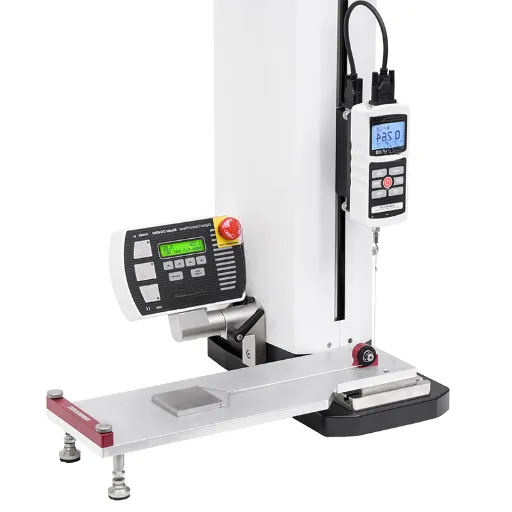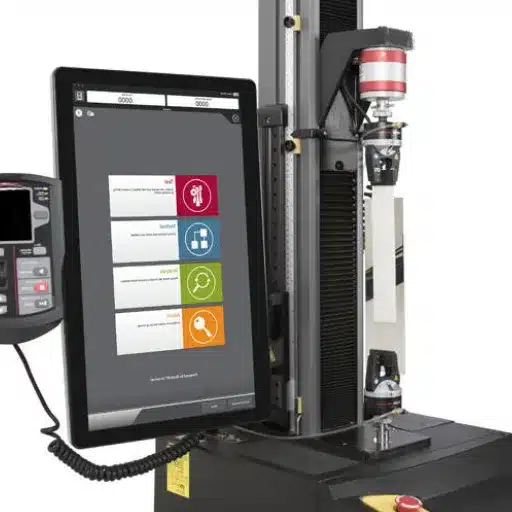When it comes to plastics, what matters most is quality, durability, and adherence to set industry standards. It can be stated that plastic testing is paramount in determining the usefulness, safety, and reliability of polymers when they are put to applications ranging from packaging to aerospace parts. This blog article sheds light on the importance of plastic testing within polymer and materials-testing laboratories. It further discusses the methods, tests, or technologies used in plastic testing and how these benefit the plastic products so tested, all to produce specimens that meet stringent standards. It is a must-read for manufacturers, designers, and researchers alike, for it offers insight into why plastic testing is so important and how it feeds innovation and product excellence.
Importance of Plastic Testing
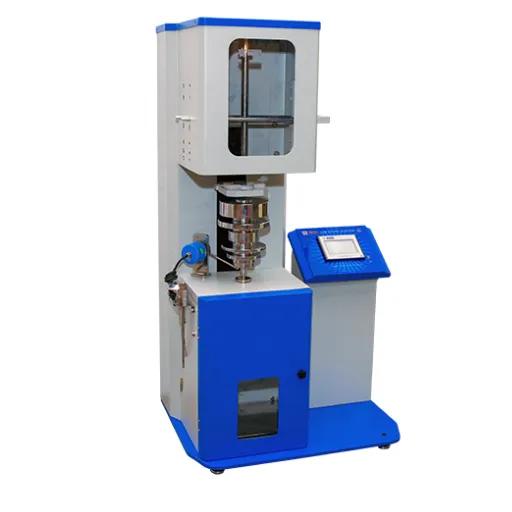
Quality Assurance in Plastic Components
Thus, quality assurance is essential for plastic components concerning the durability of the end-products, safety, and other-i-e., etc., functionalities. Plastic testing checks whether the material meets certain criteria-such as strength versus flexibility, thermal stability, or resistance to environmental factors like UV light or certain chemicals-so that, manufacturers warrant that their product does not fail while being subjected to its application.
Standardized testing from tensile strength tests to impact resistance tests or to heat analysis is implemented here. Such tests check physical and chemical properties of a material under various conditions so any weakness can be spotted before the component is shipped for production. This testing greatly diminishes the chances for defective parts, curtails the wastage of materials, and thus promotes better efficiency during the manufacturing process.
Besides, quality assurance in plastic parts supports regulatory compliance and consumer confidence. Plastics having undergone intensive testing are·generally considered safe and thus are subjected to applicable standards and certifications, building trust with the consumer. By introducting quality assurance, companies deliver products that are reliable and durable, yet also contribute to sustainable practices through reduced waste and optimal use of materials.
Environmental Sustainability and Plastic Materials
Plastic testing serves as a bridge for enhancing environmental sustainability. In evaluating composition, performance, and durability, the plastics industry ends up fabricating commercial-grade materials which are unhealthy for consumers and the environment. Tests ensure the plastics fulfill all industry standards and very often keep hazardous additives to a minimum, while on the other hand, enhance their recycling value. This secondary objective is in line with the global concern for reduction in the environmental impact of plastic production and plastic use.
Plastic testing helps to produce biodegradable and recyclable plastics that are a core area of study in plastic testing domains. Biodegradable plastics naturally block with the environment over a period of time, or they can be recycled into new products. Test conditions observe degradation of plastics under simulated environmental conditions to make sure that the plastics degrade adequately for a useful application.
In addition, testing advances plastic innovations toward more efficient resource use. With strength and durability determinations, designs could be optimized to include lesser raw materials without compromising quality. Therefore, conserving resources and reducing greenhouse gas emissions during manufacturing. Testing endorses plastic materials to fulfill functional as well as environmental responsibilities, which ultimately contributor to the sustainability agenda.
Ensuring Product Reliability in Automotive Applications
Plastic testing is a prerequisite to ensure product reliability in the automotive industry. Present-day automobiles consist of a huge variety of plastic parts, from interior fixtures to engine components. With stringent testing procedures in place, manufacturers ascertain that these materials are suitable for durability, strength, and resistance to temperature. Thus, the tests qualify every aspect of the components to be tallied against the harsh real-world scenarios for automotive uses from high temperature, mechanical stress, and prolonged wear.
One aspect of plastic testing involves assessing the performance of the materials against specific environmental challenges. Ultraviolet tests essentially simulate sunlight and check whether plastics will fade, crack, or degrade on exposure over a period. Thermal aging, on the other hand, tests whether a material can hold on to its properties under extreme heat or cold, thus ensuring its reliability for various climatic conditions. Early detection of weak spots in the materials helps manufacturers protect against premature failure.
Another important aspect of plastic testing is to check if materials meet standards for safety and performance. Impact resistance and load-bearing tests are crucial to ascertain whether components may suddenly exert forces, such as those from a collision, and thereby, threaten passenger safety. Other tests involve resistance to chemicals so that the plastics remain unaltered when in contact with fluids such as oils, fuels, and coolants. These tests help retain vehicle reliability while making innovation possible and increasing vehicle performance.
Methods of Plastic Testing
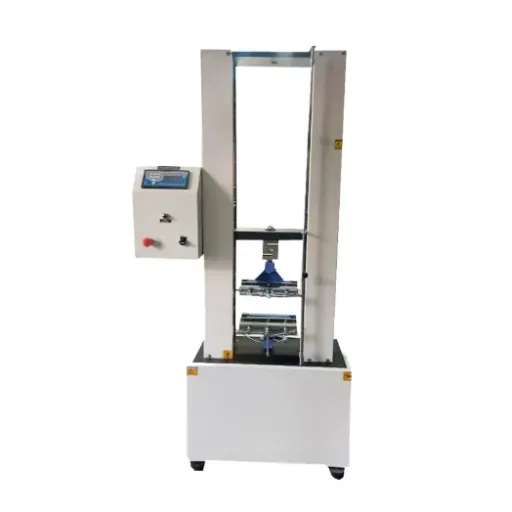
Mechanical Testing Techniques
Plastic samples are subjected to different conditions to evaluate their physical properties and ensure safety and performance standards. Tensile testing is one such technique, wherein the test helps to understand the behavior of the material when stretched. The test thus measures tensile strength, elongation, and modulus of elasticity to assess how a material resists and stretches under external force.
In contrast, impact testing measures a plastic’s capacity to absorb high-stress situations caused by sudden forces or shocks, such as in a collision. A common impact test involves subjecting a plastic specimen to controlled forces to determine its toughness. The impact test is important for applications where the plastics are subject to high stress so that such components can absorb energy without cracking or shattering.
Compression testing looks at materials while under action by compressive forces, whereby pressure is applied on the sample, and deformation is noted. Such tests are chiefly important for load-bearing plastic components, such as those used in structural or automotive applications. Together, these test methods confirm that plastics can meet the demands of contemporary engineering, while still ensuring safety and reliability.
Thermal Analysis of Plastics
It is useful to call upon thermal analysis to study materials against temperature changes. Such tests serve to evaluate various thermal properties of plastics, like melting points, heat resistance, thermal conductivity, and glass transition temperature to name a few. This helps facilitate a decision about the suitability of a given plastic for a particular end use, especially when extreme conditions of heat or cold are going to be encountered.
One very prevalent method is DSC or the associated method of Thermoanalysis. The method measures the heat flow of a plastic as it is heated or cooled or is held at a constant temperature. DSC gives very precise data about melting points, especially crystallization temperatures, and heat capacities, which are essential to assess thermal stability of a material and its processing conditions. TGA is another important method; this method measures weight changes in a material caused by temperature change and helps to locate decomposition temperature and thermal degradation behavior.
The knowledge of thermal behavior of plastics is crucial in industries like automotive, aerospace, and electronics, where materials must undergo temperature variations. In thermal analysis, engineers check that plastics conform to performance specifications and are reliable and safe under varied operating environments. These insights assist in economically designing and efficiently using plastic materials in contemporary applications.
Chemical Testing Methods
Chemical testing of plastics is an integral process to determine whether they conform to certain requirements, for instance, composition, stability, or resistance to different conditions. Such methods are deemed necessary for a product to successfully comply with regulations and perform without fail in its intended applications. From an environmental, recycling, and safety regulatory perspective, it is necessary to know which plastic is under consideration.
An example is the Fourier Transform Infrared Spectroscopy method, which analyzes chemical bonds present within a material. The plastic is illuminated with infrared radiation that produces a unique spectral fingerprint able to distinguish between polymer types and additives. It is a very convenient method because it is non-destructive and fast, making it suited for quality control.
Another technique often used in plastics forensics is chromatography, including gas chromatography/mass spectrometry (GC/MS) and high performance liquid chromatography (HPLC). These techniques separate the components of a plastic sample; depending on the plastic under investigation, the separated components will be identified and determined whether they include stabilizers, plasticizers, or residual solvents. Such information can be used to determine the presence of any harmful agents and fixing a material that was thought to be hazardous to the environment with respect to set environmental guidelines.
Applications of Plastic Testing Across Industries

Automotive Industry Standards
Testing of plastics is an essential entrepreneur in proving compliance with the safety, durability, and environmental standards of the automotive industry. Plastic materials go into the construction of anything in the car-from interior panels to exterior trims-shells that have to be rigorously regulated. Testing will establish if these materials are able to endure any thermal, mechanical, or chemical stress that might occur during their vehicle life-cycle.
Some of the basic testing concerns are tensile strength, impact resistance, and flammability tests. These materials, once tested under safety standards, are deemed suitable for harsh conditions such as extreme temperature or the long exposure of UV rays. Certification under such conditions vouches for the genuineness and therefore safety of the manufacturer’s product.
Besides, the environmental framework mandates that resins utilized in panels and components for vehicles fulfill recyclability and sustainability criteria. Testing residual solvent and toxic additive content in plastics ensures compliance with emission standards and upholds green manufacturing practices. The thrust toward environmental materials places automotive manufacturing processes on a global environmental axis.
Healthcare and Safety Regulations
Plastic testing therefore fulfils the function of being a healthcare and safety regulation conformity process. The testing standards are set to ascertain toxicity, durability, performance into various conditions, and vine protection of user health and the livelihood of the product. For example, leachable substances testing and chemical stability testing help ensure that plastics used to manufacture medical devices or food packaging do not pose a health risk and meet strict safety requirements.
In the healthcare industry, plastic tests must be conducted on materials, which must be biocompatible, i.e., they must not create any adverse reaction when in contact with human tissue. This is of utmost importance if these are used for medical implants, syringes, or tubing where there is direct interaction with the body. Testing ensures that such plastics undergo testing to ensure least degradation in their structural integrity and reaction potential or risk for contamination.
Furthermore, safety requirements impose an expectation that plastics used in the healthcare industry must withstand degradation from heat, in light or through chemical exposure. This becomes imperative in all stages of sterilization, whereby the materials must perform well without breaking down so to say, into smaller components. Plastic testing is thus a requirement for these regulatory constraints, which are aimed at providing safe and sustainable healthcare environments.
Packaging Material Testing
Packaging material testing is a crucial process that guarantees the safety, quality, and performance of packaging materials used in healthcare applications. These tests do evaluate packaging materials for durability, compatibility, and effectiveness under conditions such as heat, pressure, and chemical exposure during sterilization processes. The purpose is to ensure packaging materials protect medical products reliably and maintain their sterility until use.
The testing procedures usually include resistance tests against tensile stress, permeability, and chemical resistance. Tensile strength makes sure that the packaging stays intact while subjected to physical handling or transportation and does not tear or break. Permeability testing, on the other hand, looks at how well the packaging prevents external contaminants that might affect the contents, such as moisture or air, from crossing into the packaging. The third testing would be chemical resistance, in which chemicals and packaging materials undergo exposure to sterilizing agents to check for degradation of material itself as against a safeguarding middle for medical products inside.
Such packaging material tests, carried out in utmost rigor and seriousness, ensure adherence to stringent regulatory standards by healthcare and manufacturing bodies. This not only ensures the safety and efficacy of medical products but also maintains a clean and controlled healthcare environment. Consequently, such testing reinforces patient health and the overall reliability of medical supplies.
Technological Advancements in Plastic Testing

Automated Testing Tools in Laboratories
By increasing precision, efficiency, and repeatability in laboratory processes, automated testing tools have greatly emphasized plastic testing. They employ advanced technologies to assess critical properties of plastic materials, such as tensile strength, thermal resistance, and chemical resistance. W ith the aid of automated testing methods, laboratories greatly reduce the level of human error and inconsistencies in results over time.
This is a major benefit as automated tools can carry out many tests concurrently; therefore, it saves much time. This ability is precious in industries such as healthcare and manufacturing, where timely and accurate testing remains the norm for safety measurements. Furthermore, automated systems usually come with analytical features that enable the researcher to quickly interpret the results and make decisions based on solid data.
The tools also allow customization toward the specific testing needs. Laboratories may modify automated systems so that they are in compliance with certain regulations, or so as to work with the different properties of a variety of plastic materials. This flexibility allows the ability to keep the testing process on the cutting edge and relevant, thus ensuring safer and more reliable products in the industry.
AI-Driven Analysis for Enhanced Accuracy
AI-based analysis adds substantial power to the improvement of plastic-test engineering systems in terms of accuracy and efficiency. The tests often generate huge datasets containing volumes of information, and utilizing sophisticated AI algorithms, these large datasets can be explored with great precision to discover patterns or anomalies. This equips laboratories for finding potential defects in plastic material much faster than with the traditional laborious manual method.
Another advantage of AI is that it can conduct predictive analysis. Machine intelligence infers from history the likelihood of material failure or performance issue under set conditions. Such a priority approach enables a manufacturer to address weaknesses of a plastic product before it gets into the hands of consumers, thus providing for higher safety standards and less wastes during production.
In addition, the AI-based systems assist in streamlining the overall workflow of testing by automating the tasks that have to be done repeatedly and by minimizing human errors. This essentially speeds up testing and ensures that the results are always consistent. With this, an AI comes to the creation of novel and dependable types of plastic materials and fulfills industry standards and environmental requirements all from one side efficiently.
Compliance with Quality and Safety Standards
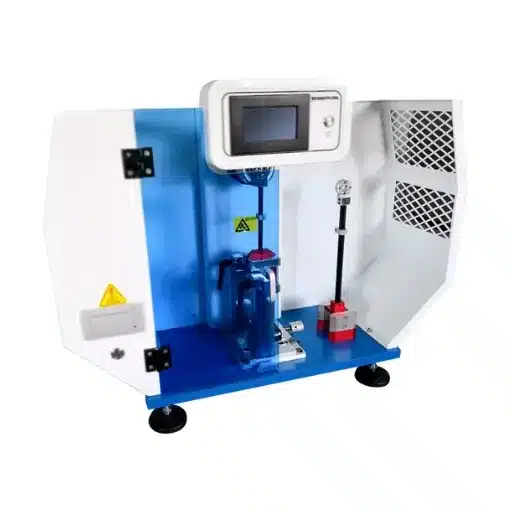
Understanding ISO and ASTM Regulations
The names of two internationally accepted agencies for developing and publishing standards to ensure quality, safety, and consistency in products, materials, and services are ISO (International Organization for Standardization) and ASTM (American Society for Testing and Materials).
Standards are a set of instructions given to industries to assure reliability and trustworthiness in their processes and outputs. They also serve as a compliance benchmark, assuring companies meet their legal and statutory requirements across a range of sectors.
ISO standards focus broadly on international harmonization and cover a wide array of industries, from manufacturing to environment management. ISO 9001 is one of the well-known standards that determine the requirements for a quality management system. It is upon compliance with ISO standards that it is ascertained that products or services comply with customer expectations and the relevant regulations, hence both operational efficiency and customer satisfaction improve.
In contrast, ASTM standards are mostly used in materials science and engineering. They are highly detailed standards focusing on testing methods, material properties, and performance criteria. For instance, ASTM standards direct how polymers, metals, composites, and other materials should be tested for their reliability and suitability for use. Together ISO and ASTM frameworks offer a structured foundation for industries to foster safety improvements, product quality, and environmental and performance standards.
Best Practices for Testing Laboratories
Testing laboratories provide services in ensuring the safety, quality, and performance of plastic materials. To present consistent and convincing test results, a laboratory must abide by the best practices. The laboratory should, as its very first step, always refer to the internationally accepted standards for reference in testing, for example, the ASTM and ISO standards. In doing so, these standards ensure the test method used is precise, repeatable, and universally acceptable.
Material handling is the primary procedure. Plastics have to be stored and treated under controlled environmental parameters to avoid contamination or alteration of their properties. Afterward, the laboratory observes that the sample preparation method obeys the test method’s precise requirements. Materials conditioning to standard temperatures and humidity levels may be required for accurate testing.
Lastly, testing labs have to install well-calibrated equipment and staff with top training. Usually, testing instruments are calibrated for fine measurements, while staff expertise ensures the error is minimal during the testing method. With these measures, the testing laboratories can obtain trustworthy plastic testing results, hence meeting industry standards and regulatory compliance.
Accreditation and Regulatory Requirements
Accreditation and regulatory obligations serve to plastic testing laboratories in terms of reliability and industry standards. To be accredited, a laboratory usually undergoes certification through bodies recognized nationally or internationally that examine the processes, equipment, and competence of the laboratory. The most commonly specified standard is ISO/IEC 17025, which specifies computation or the ability to become competent such that the laboratory results are valid. Therefore, adherence to these standards gives stakeholders confidence that the testing laboratory processes are transparent and trustworthy.
Depending on the jurisdiction or the intended use of the plastic, regulatory requirements differ. In practice, for plastics in food-related packaging, they should fulfill safety regulations such as the FDA in the U.S., or the EU Framework Regulation No. 1935/2004 in Europe. These laws are passed to ensure that the substances in question are suitable for consumer use and would provide no health hazards. Hence, such laboratories must keep themselves updated on whatever legal provisions exist so that their investigations conform to these strict regulations.
Besides, accreditation and regulatory frameworks with which a client recognizes are of the utmost importance, from which acceptance in the market builds and, ultimately, satisfies the client. Compliance at least would make public that the laboratory has quality spirit while ensuring that products tested for clients meet national and international standards. This creates a pathway for such products in the international market while avoiding the risk of legal suits or recalls. Acronymically, the accreditation and regulatory adherence serve as bases for credibility in plastic testing.
Frequently Asked Questions (FAQ)
Q: What is plastic testing and why is it needed?
A: Plastic testing means the assessment of plastic materials for their mechanical properties, durability, and performance conditions that may be imposed on them. The importance lies in assuring that plastic materials measure up to standards and specifications as laid down by the industry, mostly for the purpose of use in consumer products and some structural components.
Q: What is the testing equipment for plastics?
A: Various kinds of testing machines are made for plastic tests: tensile testers, impact testers, or rheological testing devices. These machines test compressive strength, flexural strength, and shear strength of plastic materials.
Q: How do the services improve the quality of plastic products?
A: Testing services provide vital information respecting the mechanical properties versus the plastic material and depending upon the use; hence, these include testing adhesion for coatings, test polymer materials, test molecular weights of compounds for manufacturing.
Q: What roles do thermoplastics and thermoset materials play in plastic testing?
A: Thermoplastics and thermosets are the two main categories of plastics which are tested for different properties. Thermoplastics being re-moldable are usually tested for flexibility and strength; thermosets being cured into a permanent shape are tested for their durability and resistance to high temperatures.
Q: What is a specimen for testing, and how is it important in plastic testing?
A: Test specimen is a name given to a sample of plastic material prepared for testing. It is important since the properties of the test specimen in direct association affect the results of plastic testing preparation. In proper preparation, the results must be correct and representative of the material evaluated.
Q: How can polymer analysis help consumer goods manufacturers?
A: Polymer analysis lets manufacturers learn about the composition and properties of polymeric materials used by them for consumer goods. Such knowledge helps in optimizing their formulations, subsequently giving them better performance-configurability, cost, and respect for industry standards.
Q: What are the advantages of low-cost plastic testing?
A: Such solutions enable manufacturers to ensure quality at low-cost prices without compromises that affect accuracy. Therefore, low-cost solutions might be simple testing procedures, availability of equipment of good quality for testing, or specific services catered to a particular testing need.
Q: What influence does the rate of crosshead movement exert upon plastic testing results?
A: Testing of a plastic material with one or the other rate of crosshead movement can alter the characteristic stress-strain response of the plastic. Dormant between these rates are differences in strength and ductility, thus measures to predetermine the rate of crosshead movement become necessary for proper testing.
Q: What kinds of plastic testing services can A2LA accredited laboratories offer?
A: It means that these A2LA-accredited laboratories have shown competence and reliability in plastic testing and certification services. This level of support encompasses testing plastic materials comprehensively to ascertain whether manufacturers meet regulatory requirements, receiving accurate and reliable results in return.
References
-
What is CNC Bending? – Sheet Metal Fabrication – Explains the manufacturing process and the role of CNC press brakes.
-
CNC Bending Machine Working Principle – Discusses how CNC bending machines work and their applications.
-
CNC Bending Machine – Provides insights into the machine’s functionality and its uses.
-
How does CNC Metal Bending Work? – Explains the fabrication process and precision of CNC metal bending.

